June 26th 2023 in Tok, Alaska.
The fastest and easiest way to get to Alaska from Dawson City in The Yukon is to go to the north end of Front Street and there, hop on the free ferry that will take you across the Yukon River and you’re on your way.
The ferry isn’t a huge thing; just one of those flat bottomed craft that look the same front and back. There’s no quay or slipway; the ferry simply approaches the shingle bank and then, a roll on/roll off platform is lowered to the ground and vehicles drive on. The ferry maintains power so as to hold its position against the flow of the river and, once the vehicles have driven off, a new batch drive on and are taken back in the opposite direction. On the other side, the other end of the ferry lowers its platform and they drive off again. Simple and effective. I got on with a huge RV, a giant the size of a full scale tourist bus with a rig on the back on which sat a ginormous Harley. The bus was so large (and heavy) that it took most of the deck and I was the only other vehicle allowed on with it. We got to the other side in minutes — though the pilot of the ferry had to sail at an acute angle across the great river to counter the strength of its flow, which wanted to push him well downstream. I headed off, onto the Top of The World Highway.
This is the road essentially west out of Dawson and it rises quickly up the mountainside and proceeds literally along the ridge of the mountain range, giving great views to either side of the road but especially to the north where a huge and lengthy chain of snow-covered, angular Alaskan mountains dominate the horizon. The road is mostly unpaved, or untarred as they say in these parts, meaning it is densely compacted gravel and mud. Grand when its dry; a bit of a nightmare otherwise. Thankfully it was dry and even though I was a bit nervous, especially in places where stones have accumulated, at bends in the road, or sometimes in linear strips because vehicle wheels have pushed them into mounds. I soon found myself tootling along contentedly at about 80 km/h.
The upland areas were totally devoid of habitation and indeed in parts, the road was above the treeline and the mountaintops were almost bare. After maybe 45 minutes, I realised that I had foolishly forgotten to fill my tank before exiting Dawson. The bike told me I had 95 miles left in the tank — about 140 kilometers. The first gas station was about 100 miles away. I flagged down a truck coming towards me and asked the driver how far it was to the next gas station. When he told me, we both realised that I might just about make it . . . but I might not.
“I’ve got a can,” said the driver, “I’ll give you some.”
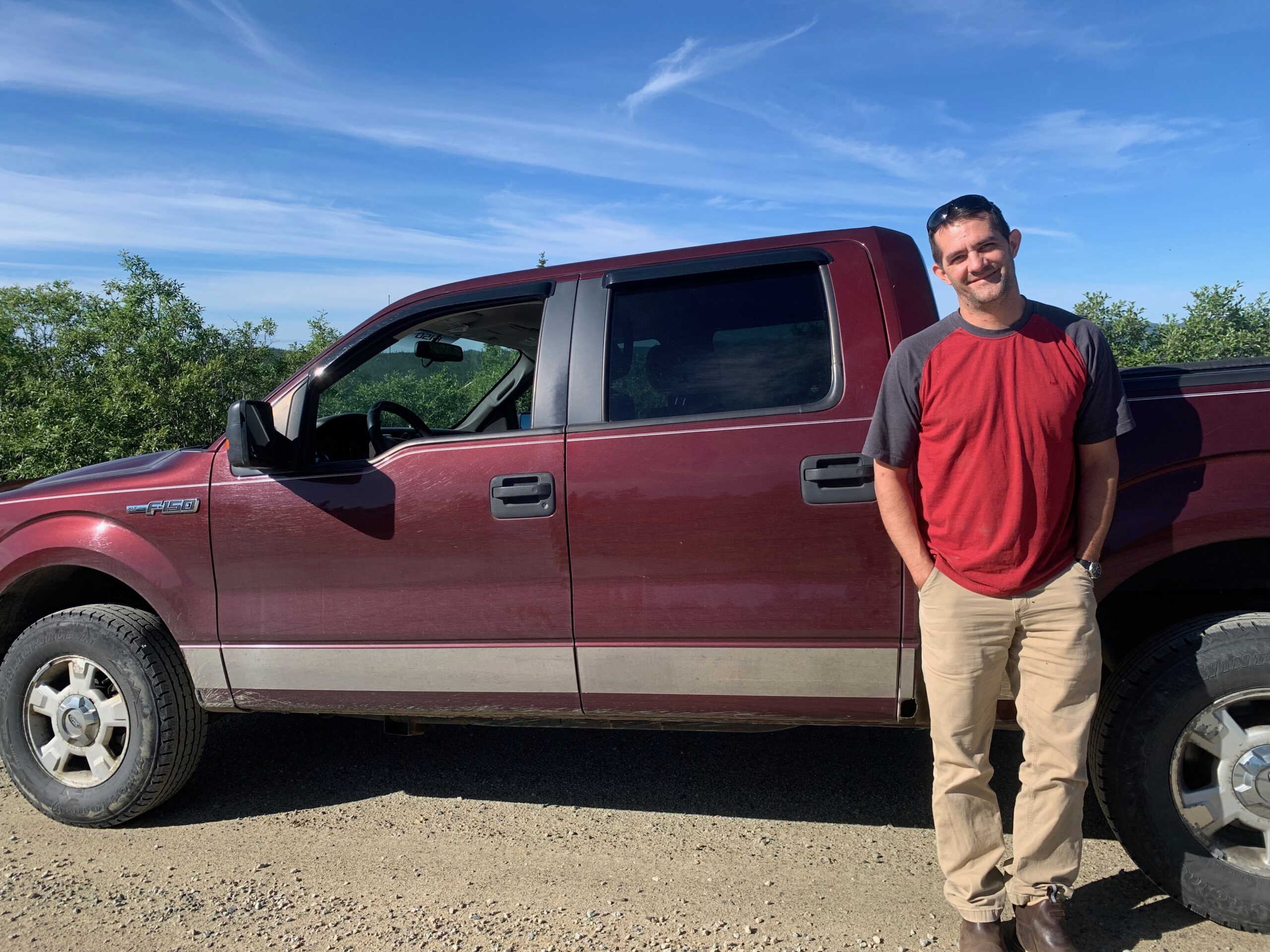
His name was Jesse. Her was a fire fighter paramedic from Juneau, the Alaskan capital to which he was driving via The Yukon, after attending as course in Anchorage. “Getting education up here isn’t always easy,” he explained. He was training to be an ER nurse. “Lots of us up here drive around with cans and we usually end up filling other people’s vehicles.” We topped up my tank with maybe five litres but Jesse generously refused my offer of CAN$20 and continued his way home — fuel range now 190 kms, easily enough to get me to the next station. Next stop for me was the 120+ Canada/US border. It is known as Poker Creek Port of Entry and proclaims its pride at being the most northerly land border port of entry into the United States.
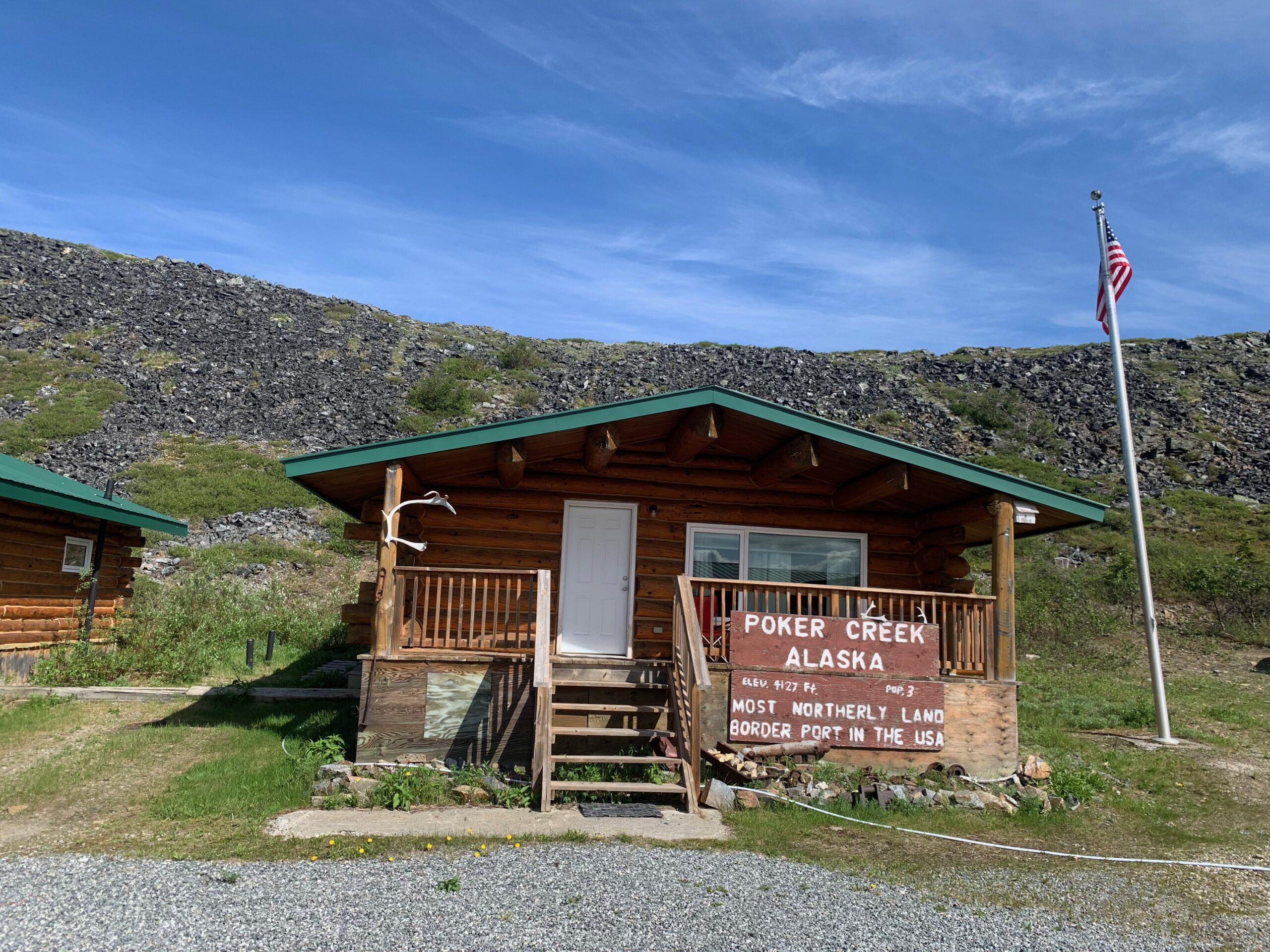
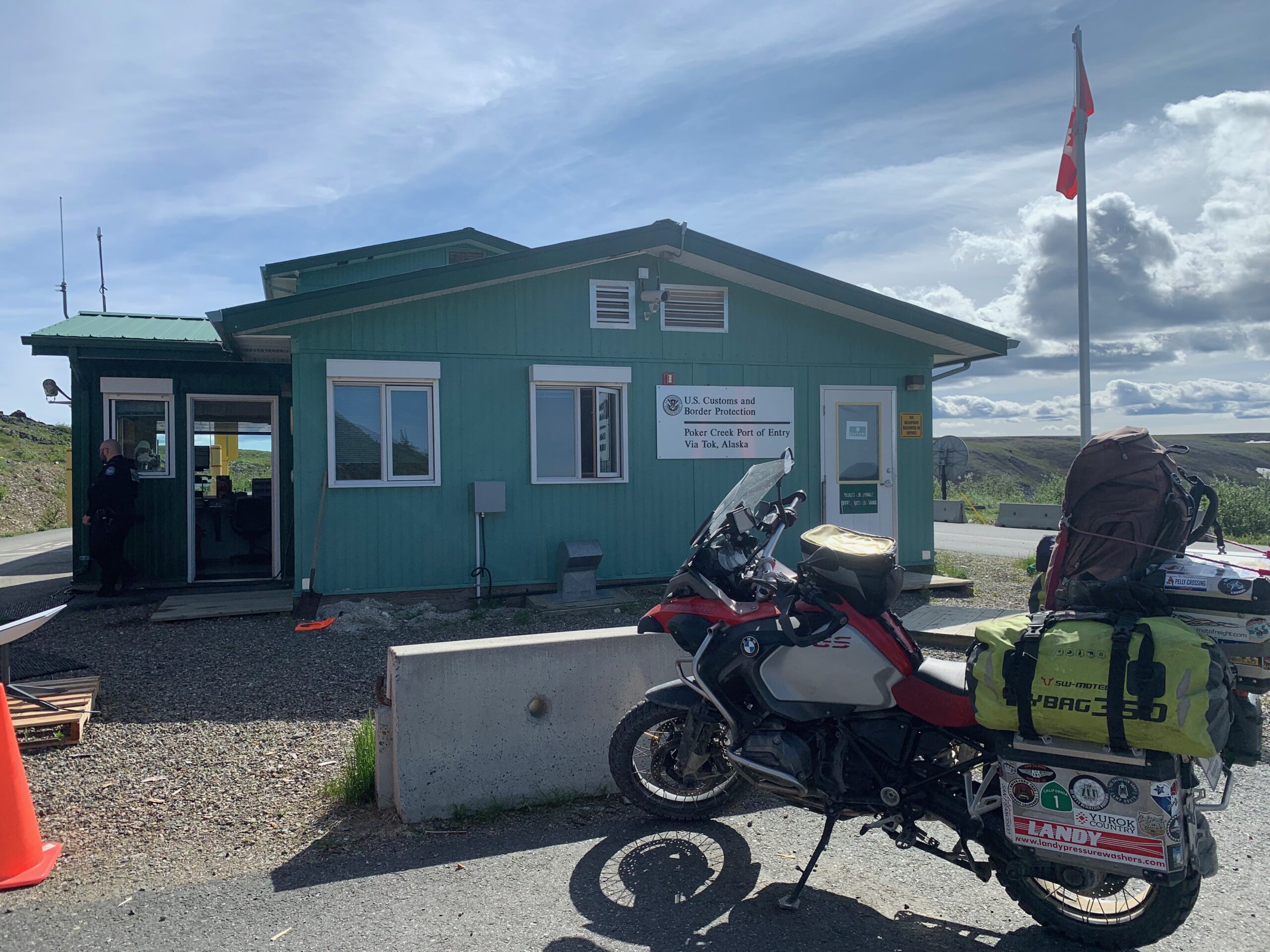
It’s a small enough place — one line for entering, one for exiting and no queue. I pulled up to the booth, as urged by a uniformed border policeman standing on the road. A colleague inside the booth was doing the active checking. Passport, he said, and I duly obliged. He flicked through it.
“You have an Esta?” He asked. Esta stands for Electronic System for Travel Authorisation and can be used, instead of a visa, by travellers from certain countries, one of which is Ireland.
“No,” I said, “I have a visa. It’s there in the passport.”
He asked what I was doing, where I was going? I told him I was travelling to Prudhoe Bay and that I was a journalist — which is also written on the visa. He said I was not entering on an I visa, which is the sort that was issued to me, allowing me work in the US, though not for any US company. I said that was what had been issued to me for the purpose stated at the time.
“Well,” he said sternly, “you are not working as a freelance journalist riding a motorcycle to Prudhoe Bay.”
“That is exactly what I am doing,” I replied with a certain, I have to acknowledge, defiance in my voice.
“No,” he said firmly. “It is not!”
And with that, he ordered me to park my bike, and report to the office around the corner, and then slammed the booth window shut.
I parked where told, all the time thinking “this is going to be interesting” because I knew I was 1,000 percent in the clear: I had all the required permissions and their records, if they bothered to look, would prove it. Another officer, named Brandenburg who was, I suspect, the other man’s senior, took over when I entered the office. He didn’t say much but on his computer, he called up information which I assume meant anything that was under my name and held by the Department of Homeland Security, which manages security and entry at US ports. That information should include details of my visa, and maybe even a copy of the supporting letter from The Irish Times, plus my track record of using the visa, which amounted to my entering the US via Texas from Mexico, last April 14th, on exactly the same basis that I was travelling now. I told Officer Brandenburg that my visa had been issued by his embassy in Dublin for the precise purpose that it was now being used — my travelling, from Tierra del Fuego since November 2022, through the United States to Alaska, while working freelance for The Irish Times. He asked whether I had any documentation, anything from Times. I said I had not but I had my Press Card and my personal travel card giving details about the journey. I gave him both and mentioned that I had been published weekly by the paper since starting my journey.
He stood there, scrolling the screen, saying nothing until he asked me how long I’d be in Alaska. I said maybe two weeks, but that I really didn’t know. I had to get to Prudhoe and then return to Fairbanks. At that point, I would try to work out how to get back to Ireland but I suspected that I might have to get back to Vancouver and that there were flights from there direct to Dublin. He really didn’t engage with me but kept examining his screen. And then, without saying anything, like announcing a decision, he just handed me my passport, press card and business card, still without saying anything, until eventually pronouncing “that’s it”.
“That’s it? I can go?” I asked.
“Yes,” he said.
No “Welcome to the United States” or “Enjoy Alaska” or “Well that’s some journey; have a good time!” Just “You can go.” I’ll say this, unlike his colleague he wasn’t an arrogant prick but it was a close run thing.
It was only a few hours but I was already missing Canada — and the Canadians.
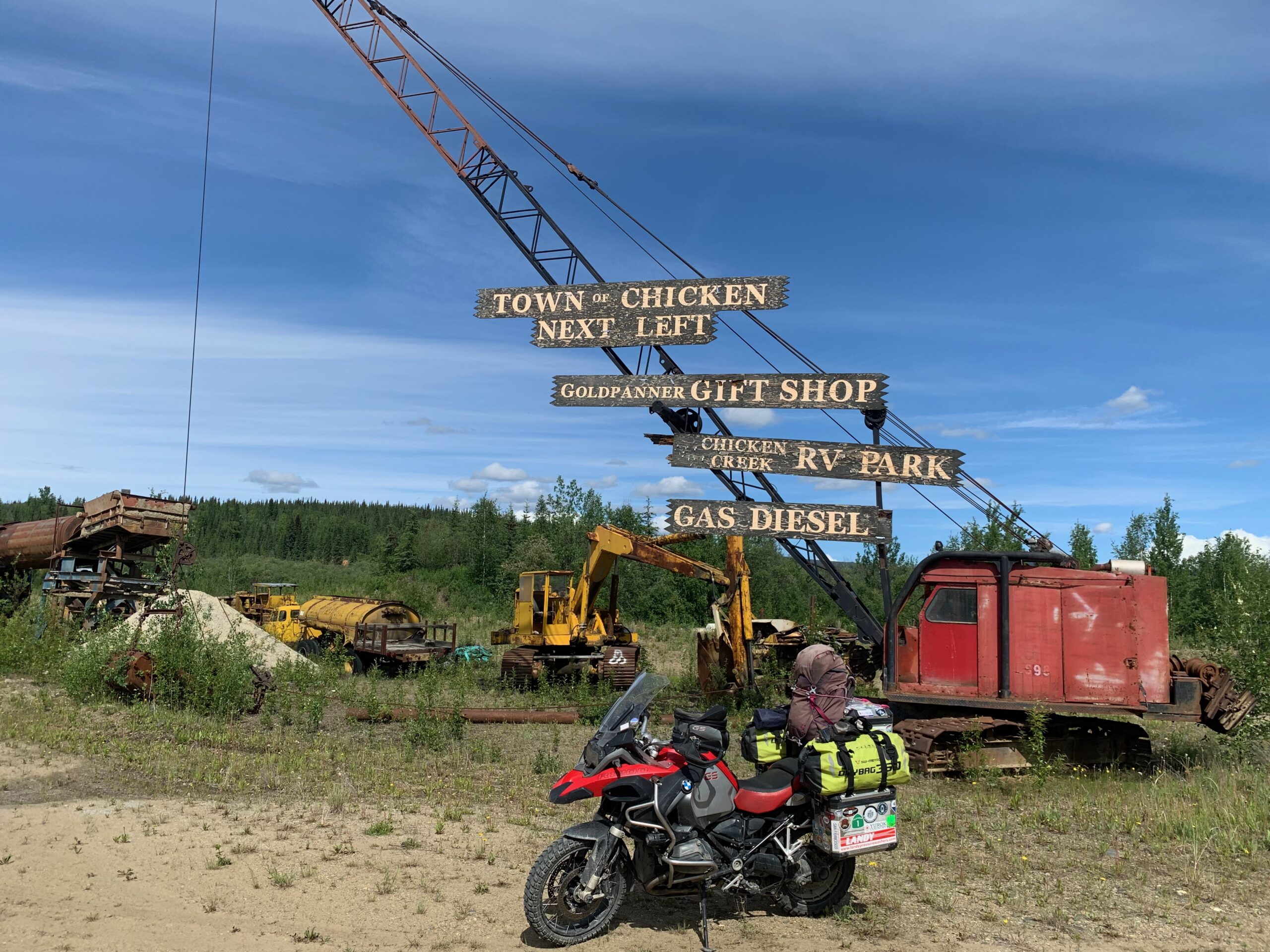
The first settlement in Alaska is a place named Chicken and it had a gas station. Why Chicken, I asked the young man at the pump. “Well,” he said, in the manner of a man pulling up a bar stool and leaning forward into his listeners. “The way I heard, at the time of the Gold Rush, all these miners were around and this place was called Ptarmigan then, and the post mistress got fed up correcting the envelopes because the miners weren’t good spellers, see, and so one day, she said ‘right, that’s it, we’re calling it Chicken from now on’. That’s the story anyways.”
I’d love to believe it was true and hey, this is America, so it might well be.
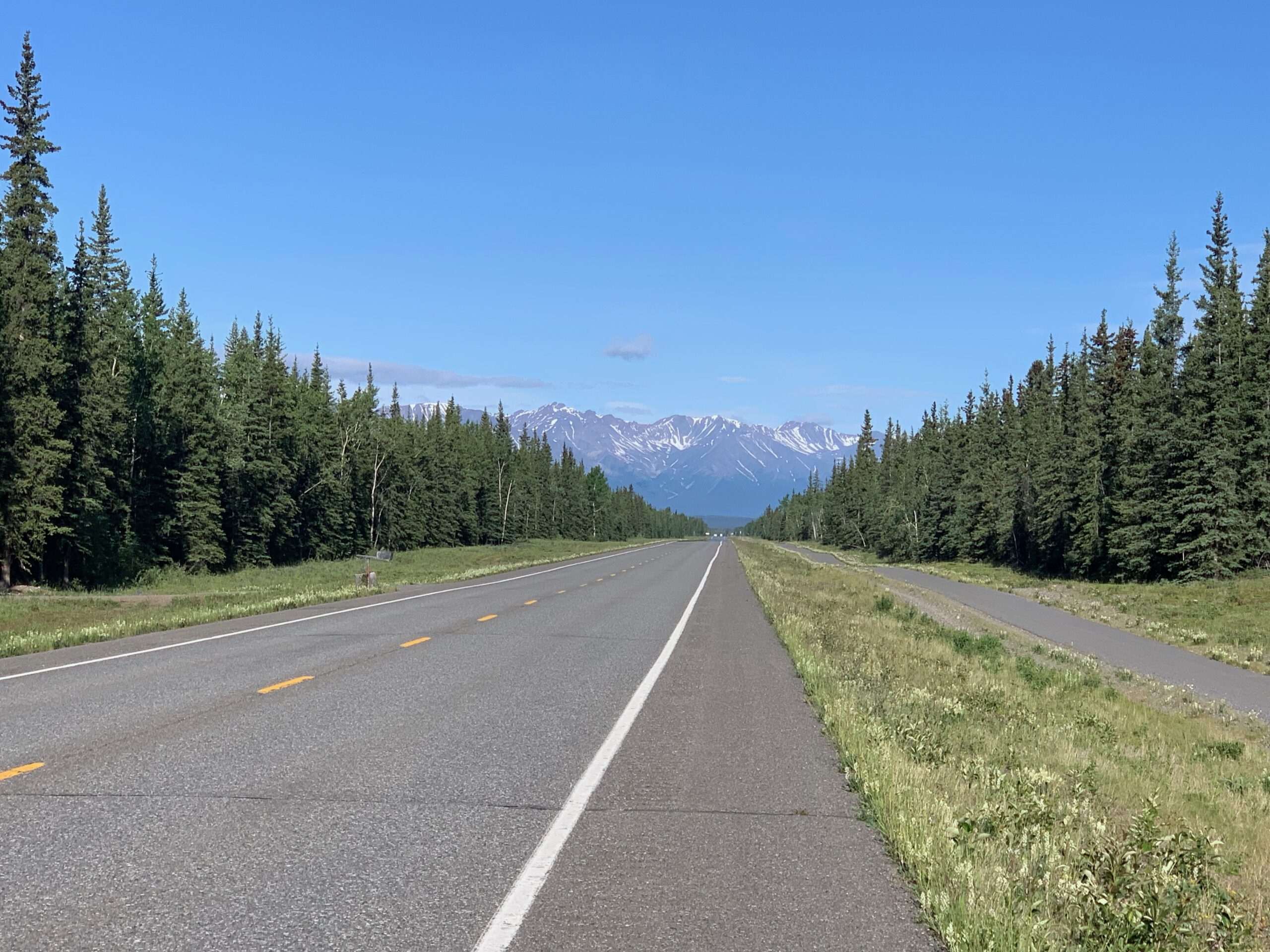
Soon, I am off again heading for Fairbanks and, on my left and ahead of me, the great big jagged Alaska Range and below me, in due course, panoramic vistas of valleys and fat, winding ox-bow rivers. All very Alaskan and very beautiful.
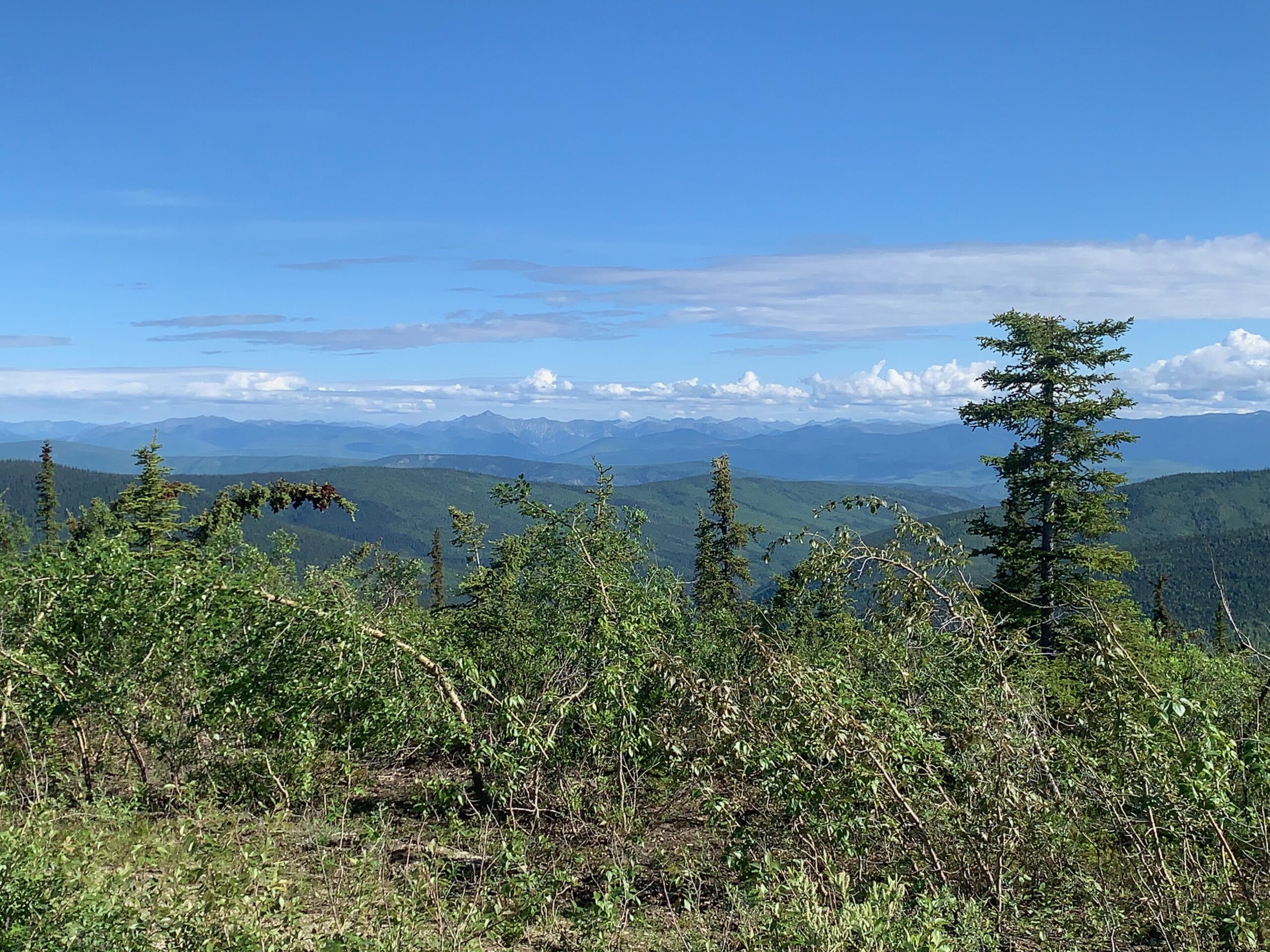
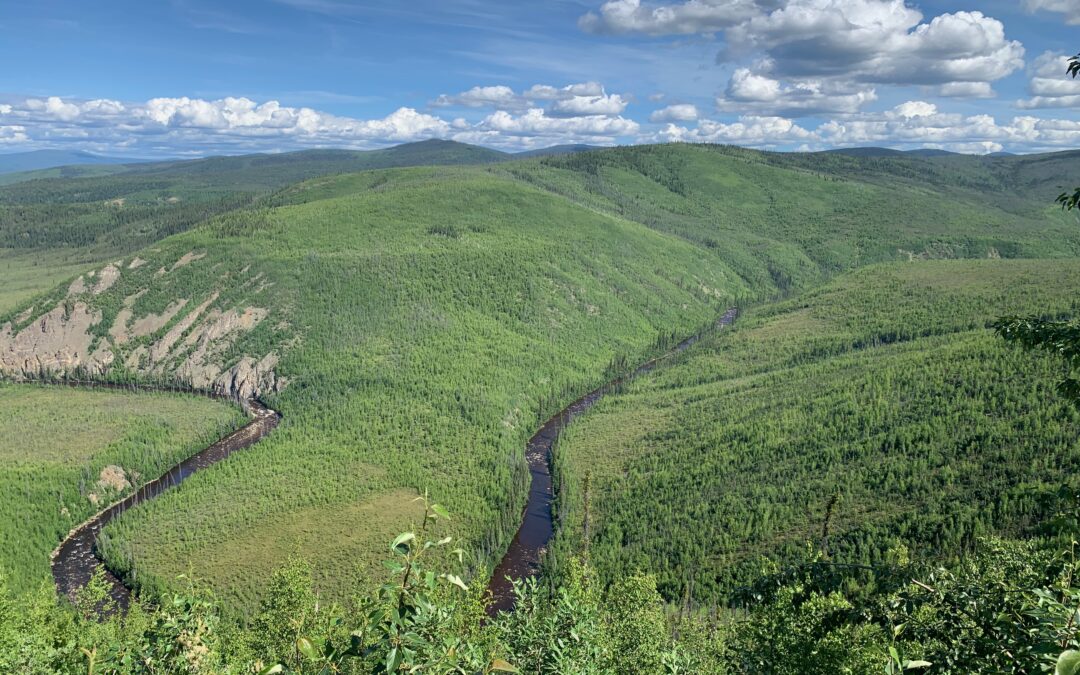
Top Gun Murtagh….Keeping rolling – Whilst Donncha O Dulaing walked for Ireland- Top Gun Peter Murtagh did it on Bike….- Best Wishes Good Friend….
Ha! Thank you… still rolling along!
Non carborundum, ignoramii ………………………
Extending a very warm welcome to Alaska despite that miserable border crossing. Have a great trip onward and upward!
More wonderful colour and narrative. Keep it up!
Hello Peter
I just discovered your blog this morning, and have read the first 4 episodes – the list on my browser starts in Ecuador on 7 Feb – are there older entries from the start of your trip?
Still shaking after reading your assisted bike crossing of the landslide in Colombia!
Continued safe travels and great stories.
Hiya and thanks for reading. Yes, there are older blogs if you scroll to the bottom of the index on the right hand side, there should be an option for older entries. Try that and if it doesn’t work, come back to me! The Colombia landslide episode was certainly one of those moments! Best wishes….;
Thanks for getting back to me, Peter. No luck with the older entries link, and nothing showing now before 8 Feb (the 7 Feb entry has dropped off since this morning!)
It’s all great reading though – many thanks again
Aye, when I entered the USA from Mexico on the Chile to Alaska ride, I was kept for about an hour at the border because I had a journalist visa. Did get to Chicken, though, where I wrote a poem in its honour:
There is a town called Chicken
Where no one ever goes.
The population’s 20
And half of those are crows.
I heard the same story about the ptarmigans 🙂